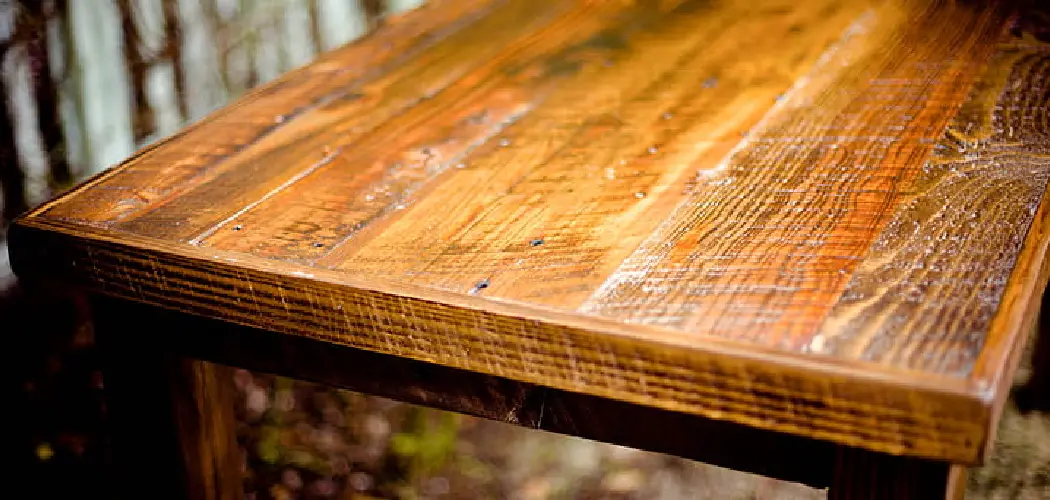Are you frustrated because your wood table has a cloudy finish? Before buying a new one, try these easy tips to fix the issue and restore your table to its former glory.
When it comes to maintaining the beauty and elegance of a wooden table, dealing with a cloudy finish can be frustrating. A hazy or milky appearance on the surface of a wooden table often results from moisture or chemical exposure, detracting from the table’s original luster. Fortunately, there are effective methods for how to fix cloudy finish on wood table, using simple household products or more targeted woodcare solutions.
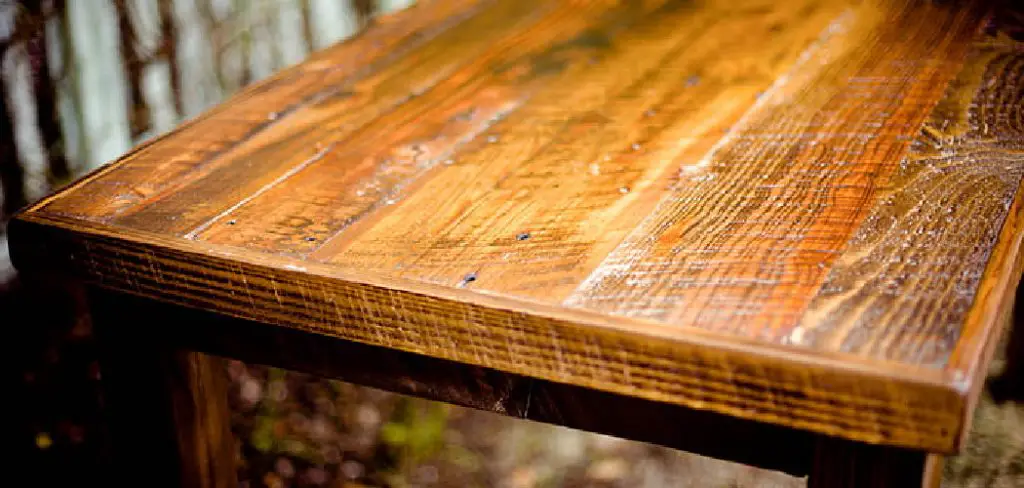
Whether you’re dealing with minor haze or more pronounced cloudiness, this guide will provide step-by-step instructions to help you achieve a precise and radiant finish.
What Will You Need?
Before you begin, gather the following materials:
- Microfiber cloth
- Soft-bristled brush
- White vinegar
- Olive oil or mineral oil
- Lemon juice
- Water
- Wood cleaner or restorer (optional)
Once you have these items, follow the steps below to fix your table’s cloudy finish.
9 Easy Steps on How to Fix Cloudy Finish on Wood Table
Step 1: Determine the Cause
Before implementing a solution to fix the cloudy finish on your wood table, it’s essential to identify the underlying cause of the problem. Cloudiness can often be attributed to trapped moisture, heat exposure, or chemical residue. To pinpoint the cause, consider recent events or actions that might have affected the table. Have drinks been placed on the table without coasters, leaving water rings? Did you use a cleaning product or polish that was unsuitable for wood surfaces? Or may a hot dish leave a heat mark?
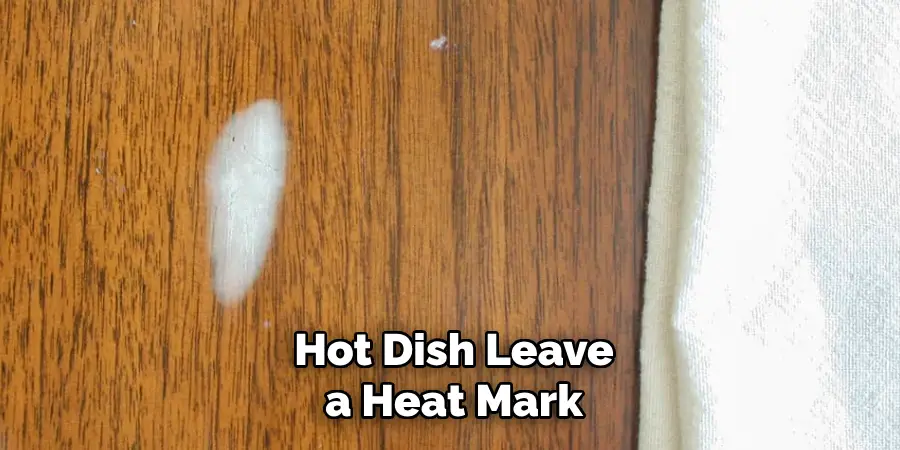
By recognizing these causes, you can choose the most appropriate method for addressing the cloudiness and prevent future occurrences. Understanding the source of the issue will better equip you to restore your table effectively.
Step 2: Clean the Surface
Start by wiping down the wood table with a microfiber cloth to remove dust or debris. This step is crucial as it ensures no particles get in the way of treating the cloudy finish. If the table is filthy, lightly dampen the cloth with water, but ensure it is not soaking wet. After cleaning, allow the table to dry completely before moving on to the treatment process. This foundational step helps prepare the surface for further care and ensures the applied solutions are more effective.
Step 3: Apply a Vinegar Solution
Mix equal white vinegar and water in a small bowl or spray bottle. Dampen a clean microfiber cloth with the vinegar solution, ensuring it’s not too wet. Gently rub the cloth over the cloudy areas in a circular motion, applying light pressure. The acetic acid in vinegar helps break down mineral deposits or residues that may have formed on the wood, including those causing cloudiness. After treating the area, wipe it down with a dry cloth to remove excess moisture. Let the table air dry before proceeding to the next step. This simple vinegar solution can effectively clear milky surfaces, restoring the wood’s natural beauty.
Step 4: Use Olive Oil or Mineral Oil
Once the vinegar solution has dried, apply a small amount of olive or mineral oil to a clean, soft-bristled brush or cloth. Gently work the oil into the wood in a circular motion, focusing on the areas with the cloudy finish. The oil helps to moisturize the wood, bringing out its grain and enhancing its natural sheen. Furthermore, it acts as a barrier against moisture, preventing future cloudiness. Allow the oil to penetrate the wood for at least 30 minutes, then buff the surface with a dry microfiber cloth to remove any excess oil and reveal a lustrous finish.
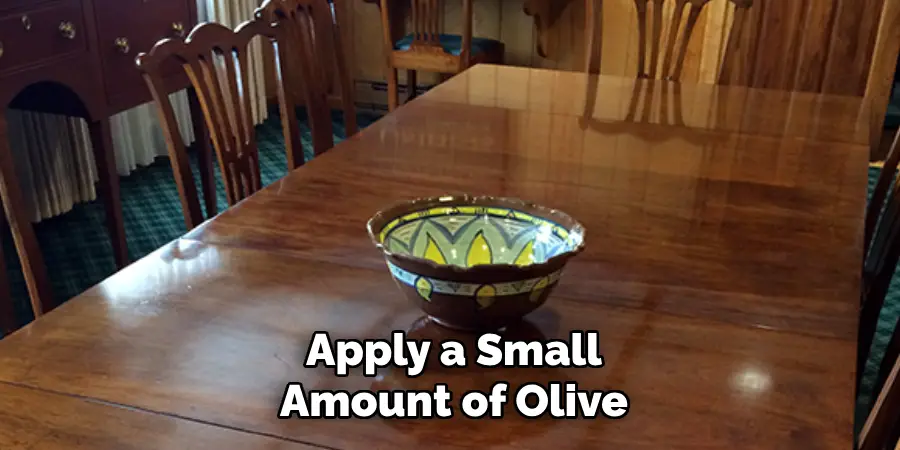
Step 5: Lemon Juice for Stubborn Spots
For any remaining cloudy areas that are not resolved by the vinegar and oil treatments, a mild acidic solution can be helpful. Mix equal parts of lemon juice and water in a small container. Dampen a clean microfiber cloth with the lemon juice mixture, ensuring it is not overly wet. Apply the solution to the stubborn spots on the wood table with gentle circular motions.
Lemon juice contains citric acid, which effectively helps to dissolve tough residues or grime contributing to the cloudiness. After treating these areas, wipe down the table with a dry cloth to remove any remaining moisture and allow it to air dry. This additional step should target the stubborn spots, providing a more straightforward and more polished finish.
Step 6: Allow Time for Complete Drying
After employing the lemon juice treatment, allowing the table surface ample time to air dry completely is crucial. This ensures that no moisture is left, which could contribute further to cloudiness. Ideally, leave the table uncovered in a well-ventilated room to aid the drying process. Depending on the humidity and temperature of the environment, this may take several hours. Be patient during this phase, as thorough drying is vital to preserving your work and restoring your table’s finish.
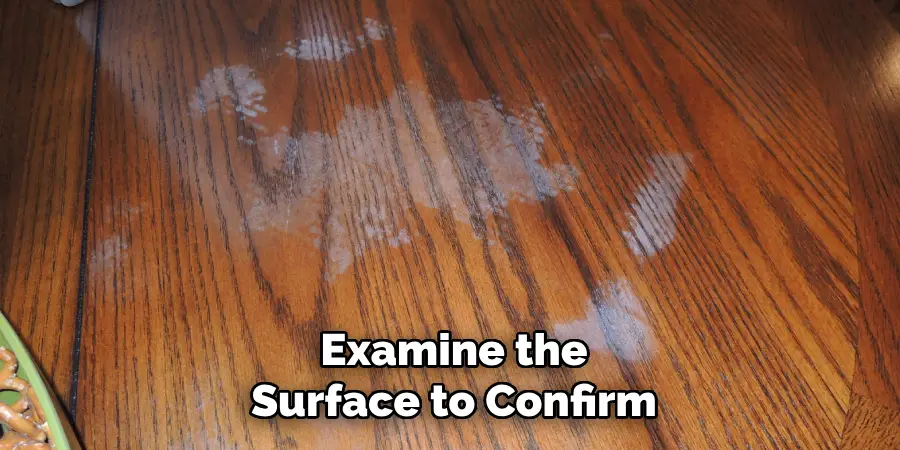
Once completely dry, examine the surface to confirm that the cloudiness has been eliminated before using the table as usual.
Step 7: Polish the Surface
To enhance the wood’s shine and add an extra layer of protection, apply a fine-quality furniture polish. Choose a polish that is suitable for the type of wood your table is made from. Using a clean microfiber cloth, apply a small amount of polish to the table surface in a circular motion. This enhances the wood’s natural luster and helps shield it against future moisture and dust accumulation. Allow the polish to settle for a few minutes, then buff the table with a dry cloth to achieve a smooth, shiny finish. Regular polishing can keep the table looking pristine and maintain the results of your restorative efforts.
Step 8: Consider Using a Wood Cleaner or Restorer
If the cloudiness persists after trying vinegar, oil, and lemon juice, you may consider using a specialized wood cleaner or restorer. These products are designed to deep clean and rejuvenate wood surfaces. Before application, read the manufacturer’s instructions carefully to ensure compatibility with your table’s finish. Apply a small amount of the cleaner or restorer to a clean cloth and gently rub it onto the cloudy areas using circular motions. Allow the product to sit as per the instructions, and then wipe off any excess with a dry cloth.
Step 9: Prevent Future Cloudiness
To maintain the clarity and polish of your wood table, adopt preventive measures against future cloudiness. Always use coasters, placemats, and trivets to protect the surface from water rings, heat marks, and scratches. Regularly dust and clean the table with a dry or slightly damp microfiber cloth to prevent the buildup of residues that could lead to cloudiness. Consider applying a wood conditioner periodically to keep the wood hydrated and less prone to absorbing moisture. By taking these preventive steps, you can effectively preserve the beauty and functionality of your wood table for years to come.
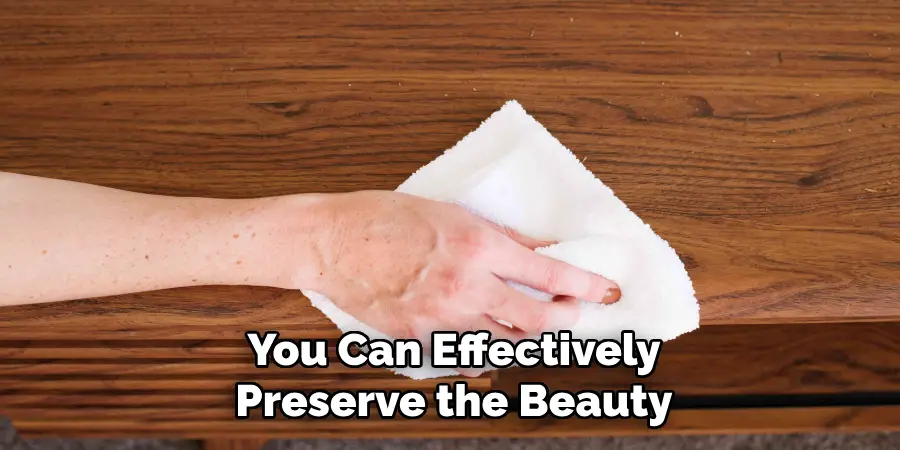
With these simple and effective steps, you can successfully remove cloudiness from your wood table and restore its natural beauty.
5 Things You Should Avoid
- Using Abrasive Materials: Avoid using rough sponges, steel wool, or any abrasive cleaning tools on your wood table. These can scratch and damage the surface, leading to more severe issues than just a cloudy finish. Always opt for soft cloths or brushes instead.
- Applying Excessive Water: When cleaning a cloudy finish, avoid using too much water. Excess moisture can seep into the wood, causing swelling or further cloudiness. Always ensure the cloths used are only slightly damp and thoroughly dry the surface afterward.
- Using Harsh Chemicals: Avoid harsh cleaning chemicals like bleach or ammonia. These can strip the wood’s finish and lead to discoloration.
- Skipping Protective Covers: Do not ignore the importance of protective covers like coasters and placemats after removing the cloudiness. Failing to use them can result in water rings and heat marks that quickly bring back cloudiness.
- Neglecting Regular Maintenance: Forgetting to maintain your wood table regularly can lead to cloudiness reappearing. Consistent dusting, occasional polishing, and immediate attention to spills or stains are crucial to keeping the table in pristine condition.
By avoiding these common mistakes, you can prevent further damage and maintain the clarity of your wood table’s finish.
Conclusion
How to fix cloudy finish on wood table requires patience and the proper techniques.
You can revive your table’s appearance by understanding the causes of cloudiness and taking appropriate steps with readily available household solutions like vinegar, oil, and lemon juice. It’s important to allow adequate drying time and finish with a wood polish to protect and enhance the luster. If these initial methods are insufficient, consider using specialized wood cleaners and maintain regular upkeep to prevent future blemishes. Avoid common pitfalls such as using abrasive tools or excessive water, and always protect the table with coasters and placemats.
By following these steps and maintaining regular care, you can keep your wood table looking beautiful and enjoy its natural beauty for years.

